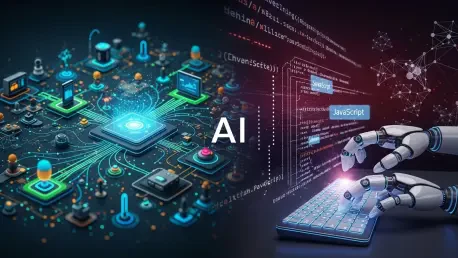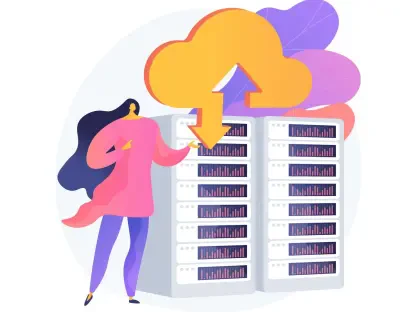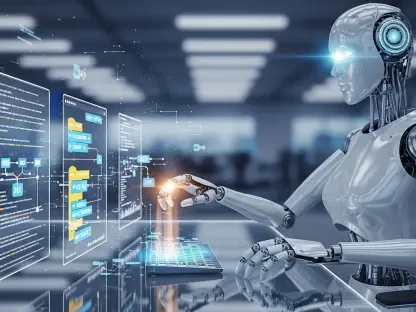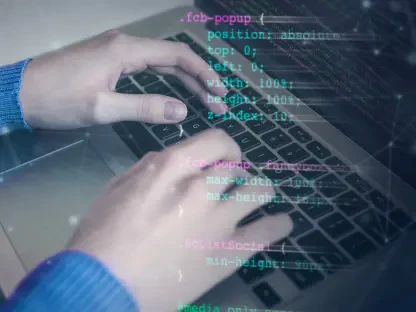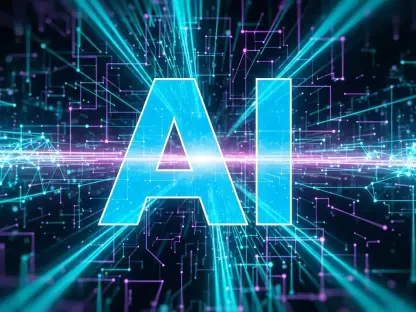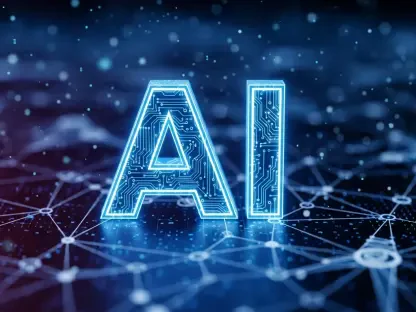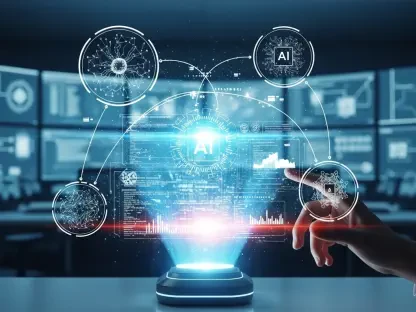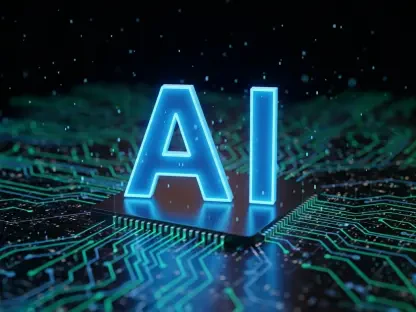In an era where billions of devices are interconnected, shaping everything from industrial operations to urban living, the synergy between Internet of Things (IoT) platforms and AI-powered coding tools stands as a pivotal force in technological advancement. The sheer scale of IoT ecosystems, with trillions of data points generated daily, poses a complex challenge for integration and management, prompting industries to seek efficient and secure solutions. How can industries keep pace with this rapid evolution while ensuring efficiency and security? This review delves into the transformative intersection of IoT platforms, which orchestrate vast networks of connected devices, and generative AI coding solutions, which promise to accelerate software development. It aims to dissect their combined potential, scrutinize their capabilities, and evaluate their impact on modern tech landscapes.
Understanding IoT Platforms and AI Coding
IoT platforms serve as the backbone for managing interconnected devices across diverse environments, from factory floors to smart cities. These systems provide a unified framework to handle device communication, data aggregation, and operational oversight, ensuring seamless functionality in highly dynamic settings. Their role has become indispensable as the number of connected devices continues to skyrocket, demanding robust solutions for integration and control.
On the other hand, AI-driven coding, powered by generative models, introduces a paradigm shift in software creation by automating code generation for specific applications. This technology enables developers to produce functional scripts and applications at unprecedented speeds, often with minimal manual input. Its relevance grows as organizations seek to reduce development timelines and costs, particularly in the context of IoT where tailored solutions are frequently required.
The convergence of these two domains marks a significant turning point in technology. IoT platforms offer the structural integrity needed for complex ecosystems, while AI coding brings agility to the development process. Together, they hold the potential to redefine how industries approach connectivity and innovation, setting the stage for a deeper exploration of their combined strengths and limitations.
Core Components and Capabilities
IoT Platforms – Managing Complexity
IoT platforms are engineered to tackle the intricate challenges of device ecosystems by providing centralized management tools. They enable seamless integration across heterogeneous devices, supporting various protocols and standards to ensure smooth communication. This capability is critical in industries like manufacturing, where diverse machinery must operate in unison to maintain productivity.
Security remains a cornerstone of these platforms, with advanced frameworks designed to protect against cyber threats that could compromise vast networks. Features such as end-to-end encryption and real-time threat detection are embedded to safeguard sensitive data, a non-negotiable aspect in environments like smart cities where public safety is at stake. Performance metrics from real-world deployments often highlight their reliability in maintaining uptime and preventing breaches.
Scalability is another defining strength, allowing platforms to adapt to growing networks without sacrificing efficiency. Whether supporting a handful of sensors or millions of connected endpoints, these systems are built to expand alongside organizational needs. Their application in sectors such as logistics demonstrates their ability to manage complexity at scale, ensuring operational continuity as demands evolve.
AI Coding – Speed and Automation
Generative AI tools have redefined coding by automating the creation of software for IoT applications, drastically cutting down development time. For straightforward tasks like scripting basic sensor data collection or setting up alerts, these tools excel, producing reliable code with minimal human oversight. This efficiency translates into significant cost savings for businesses aiming to deploy quick solutions.
However, limitations surface when addressing intricate systems that require deep integration or custom logic. AI-generated code often struggles with the nuances of enterprise environments involving legacy infrastructure or multi-layered security protocols, leading to potential gaps in functionality. Such shortcomings underscore the need for human expertise in refining and validating outputs for complex scenarios.
The impact on development timelines is undeniable, with projects that once took weeks now often completed in days. Yet, this speed can come at the expense of long-term maintainability, as hastily generated code may lack the architectural foresight needed for future scalability. Balancing automation with strategic planning remains essential to fully harness this technology’s benefits in IoT contexts.
Emerging Trends in IoT and AI Integration
The fusion of IoT platforms and AI coding is giving rise to innovative hybrid models that leverage the strengths of both technologies. These models integrate AI’s rapid code generation within the robust frameworks of IoT platforms, aiming to streamline custom configurations while maintaining system coherence. This approach is gaining traction as a way to address diverse operational needs efficiently.
Industry adoption is shifting toward solutions that prioritize flexibility, with a notable surge in demand for low-code and no-code environments. These platforms, often enhanced by AI, empower non-technical users to contribute to development processes, democratizing innovation across sectors. Such trends are reshaping how organizations approach IoT deployments, reducing reliance on specialized coding skills.
Looking ahead, the emphasis on interoperability and adaptive systems is expected to drive further advancements. As ecosystems become more interconnected, the ability to seamlessly blend AI-driven automation with platform stability will likely define competitive edges. This ongoing evolution hints at a future where technology deployment becomes more accessible and responsive to real-time demands.
Real-World Applications and Use Cases
Across industrial automation, IoT platforms paired with AI coding are optimizing processes by enabling predictive maintenance and real-time monitoring. Factories utilize these technologies to anticipate equipment failures before they occur, minimizing downtime through AI-generated scripts that trigger timely alerts. Such implementations showcase measurable improvements in operational efficiency.
In the utilities sector, smart grid management benefits from this synergy, with platforms orchestrating vast networks of energy meters while AI tools customize data analytics solutions. This combination allows for dynamic load balancing and outage detection, enhancing service reliability for millions of consumers. Case studies from major providers reveal significant reductions in response times to grid anomalies.
Smart infrastructure projects, particularly in urban planning, illustrate another compelling application. IoT platforms manage traffic sensors and public safety systems, while AI coding accelerates the development of tailored applications for data visualization and citizen engagement. These deployments not only improve city functionality but also highlight the practical value of integrating cutting-edge tools in public domains.
Challenges and Limitations
Technical hurdles pose significant barriers to the seamless integration of IoT platforms and AI coding, with technical debt emerging as a primary concern. AI-generated solutions, while quick to deploy, often result in fragmented systems that are challenging to maintain or upgrade, creating long-term operational inefficiencies. This issue necessitates careful consideration of lifecycle management strategies.
Security vulnerabilities further complicate adoption, as reliance on third-party AI tools can expose intellectual property and sensitive data to risks. IoT platforms, despite robust safeguards, face heightened threats when paired with external code generators lacking stringent security protocols. Addressing these gaps requires rigorous vetting and standardized practices to protect critical assets.
Market and regulatory challenges also loom large, with inconsistent standards and compliance requirements hindering widespread implementation. Navigating this landscape demands collaboration among stakeholders to establish unified guidelines that foster innovation without compromising safety. Efforts to mitigate these obstacles are underway, focusing on harmonizing technology deployment with legal frameworks.
Future Outlook for IoT and AI Synergy
Anticipated breakthroughs in AI algorithms and IoT platform architectures promise to enhance their collaborative potential over the coming years. Innovations targeting improved contextual understanding in AI coding could bridge current gaps in handling complex systems, while platforms may evolve to offer more intuitive interfaces for non-experts. Such advancements are poised to redefine operational paradigms.
Hybrid approaches are likely to dominate strategic planning, blending AI’s agility with the structural integrity of platforms to cater to diverse use cases. This balance could enable organizations to tackle immediate needs without sacrificing long-term scalability, fostering environments where rapid innovation and stability coexist. Industry leaders are already exploring pilot programs to test these integrated models.
The broader impact on society and industries hints at transformative shifts, from smarter resource management to enhanced public services. As these technologies mature, their ability to address global challenges like sustainability and urbanization will likely grow, reshaping how communities function. Speculation on their trajectory suggests a profound influence on both tactical and strategic levels of decision-making.
Final Thoughts
Reflecting on this comprehensive evaluation, the interplay between IoT platforms and AI coding proves to be a dynamic and multifaceted domain that demands nuanced understanding. Their combined capabilities demonstrate remarkable potential in streamlining complex ecosystems and accelerating innovation across sectors. The analysis highlights both the immediate advantages of speed and the enduring value of structured integration.
Moving forward, organizations should prioritize strategic alignment by assessing specific needs against the strengths of each technology. Investing in hybrid solutions that integrate AI’s efficiency with platform reliability emerges as a prudent path to mitigate risks like technical debt. Additionally, fostering collaboration to address security and regulatory gaps stands out as a critical step to ensure sustainable progress.
As the technological landscape continues to evolve, staying agile will be key. Stakeholders must remain vigilant, adapting to emerging tools and standards to maintain competitive edges. Exploring pilot initiatives and cross-industry partnerships could unlock new avenues for leveraging this powerful synergy, paving the way for groundbreaking advancements in connectivity and automation.
